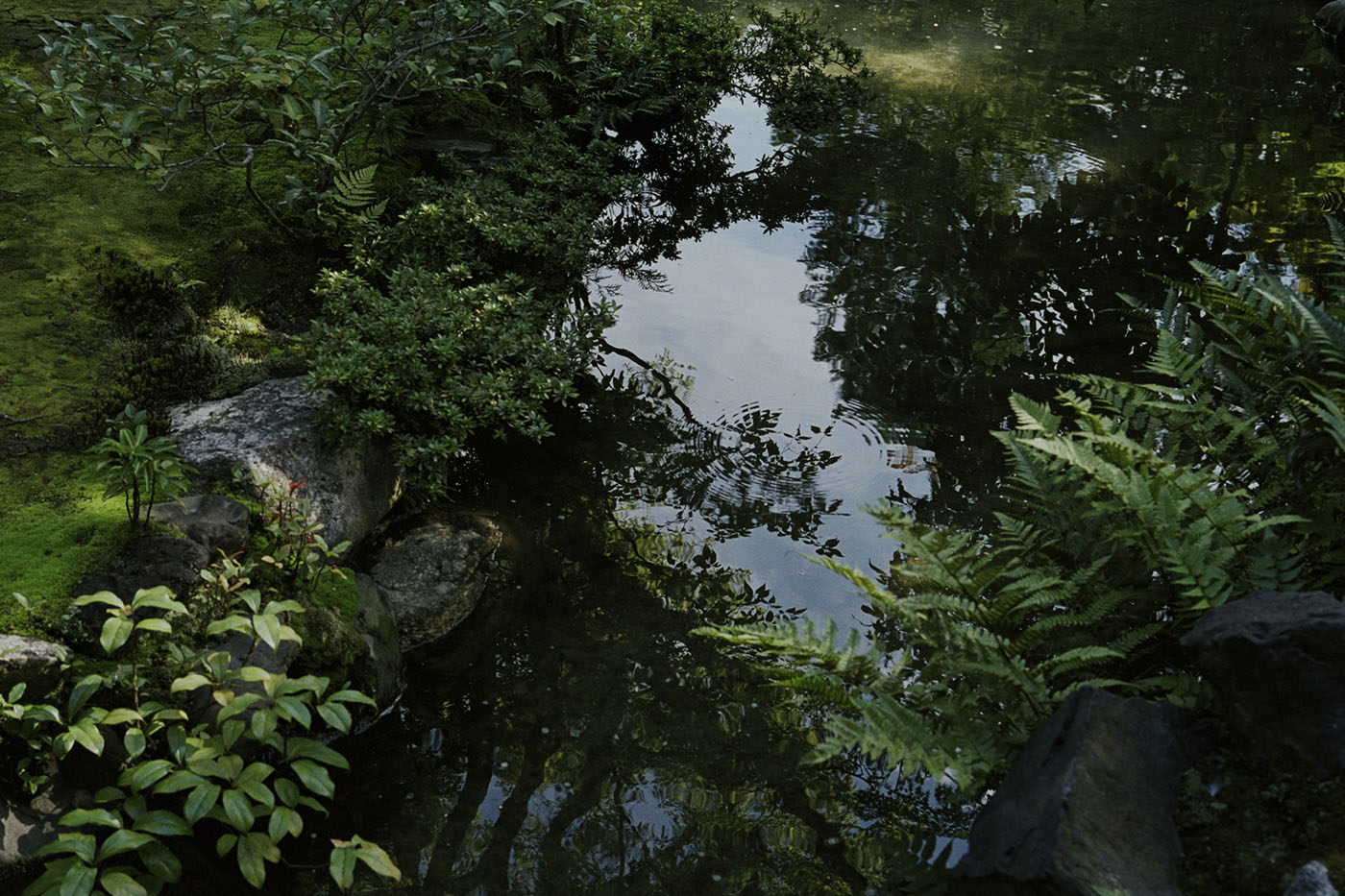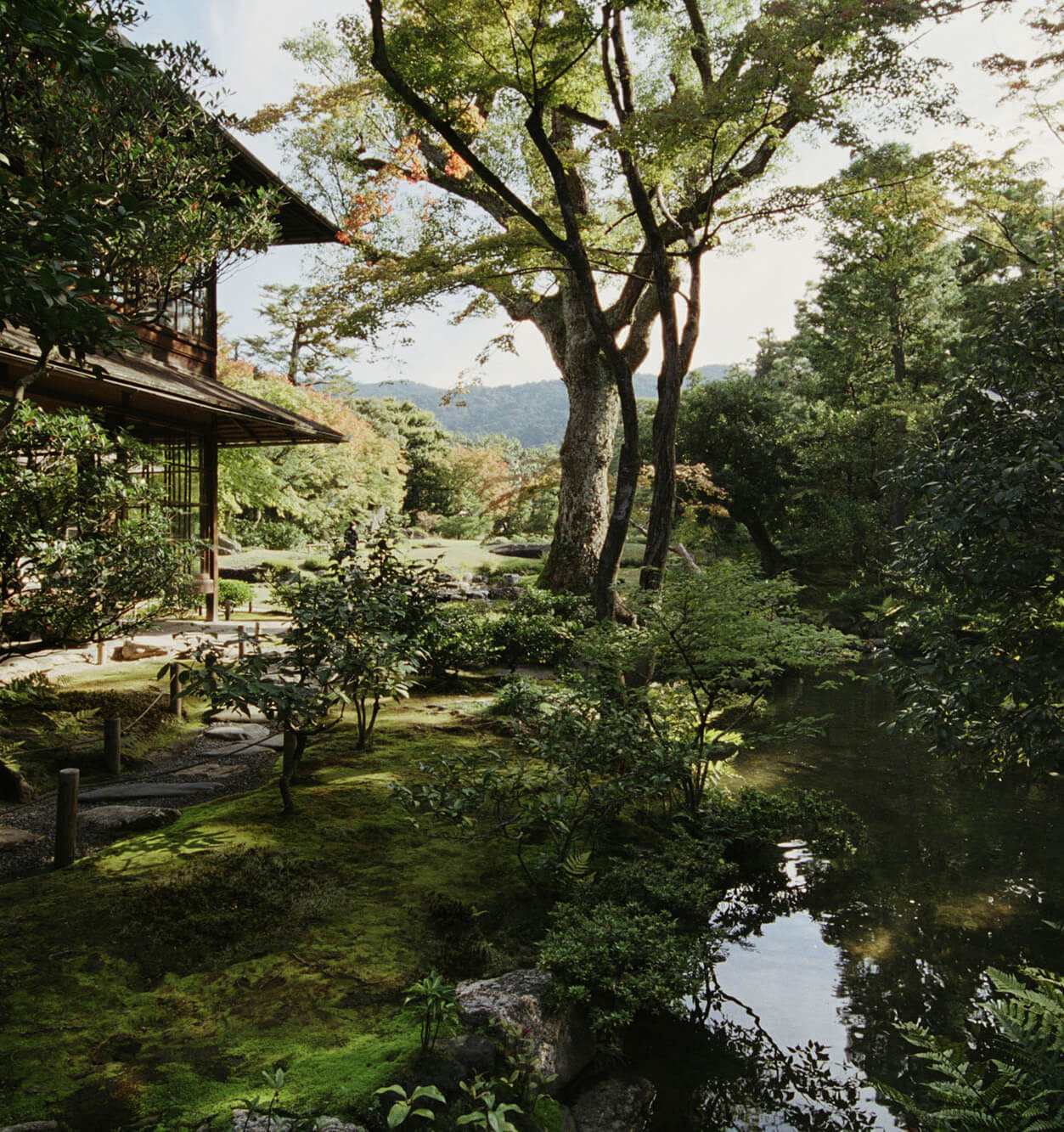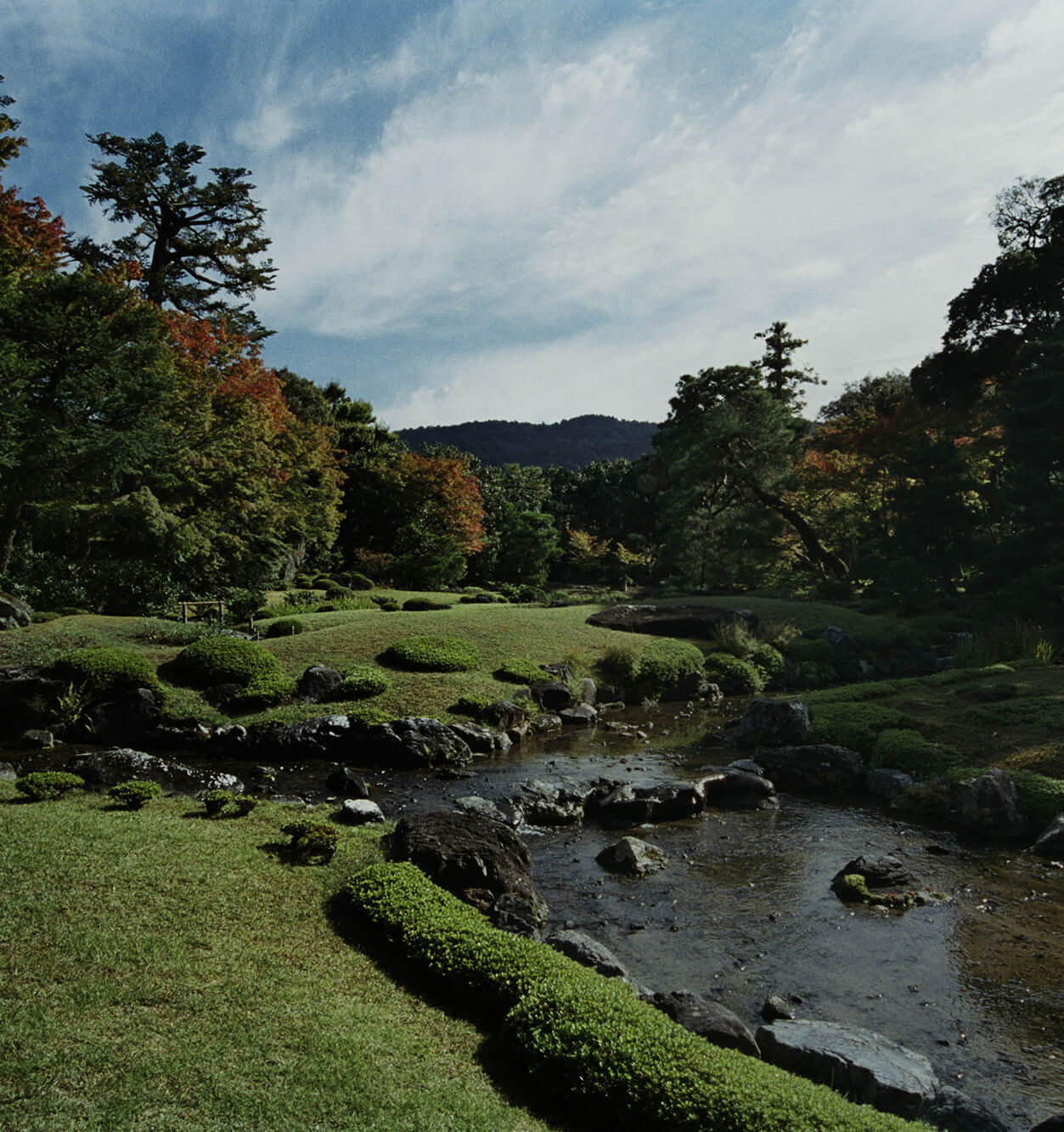DUO’S JOURNEY
Kyoto Murin-an
Murin-an was built as a villa for the Meiji- and Taisho-era (turn of the 20th century) politician Arimoto Yamagata. The strip of land where Murin-an sits was originally among the vast precincts of the nearby temple Nanzen-ji. The temple’s precincts were reduced when Buddhism was abolished in the early Meiji era, however, and the subject land was refashioned for constructing 15 or so villas, including Murin-an, which was among the first built. None other than the highly regarded Jihei Ogawa VII designed the garden. Jihei Ogawa went on to design the gardens of many of the villas that followed. This one is designated as a Special Place of Scenic Beauty by the national government.
What kind of garden is Murin-an?
Yamaguchi:
Murin-an is a widely known Japanese garden with shakkeis in Kyoto, designed by the gardener Jihei Ogawa VII. Jihei Ogawa laid the foundation for modern Japanese gardens by bringing a stream into a garden.
Until then, large ponds were built into Japanese gardens on the estates of daimyo and such. These ponds were motifs for the sea, and they were mostly there just to be looked at. But when Arimoto Yamagata asked Jihei Ogawa to design a garden, the latter chose not to focus on a pond but instead to incorporate a stream in the garden. It’s a very modest river that draws in water from the Lake Biwa Canal and meanders into another garden. Someone admiring the garden then doesn’t just look at the water but instead moves alongside it, experiencing it. Jihei Ogawa had a hand in several similar gardens around Nanzen-ji.
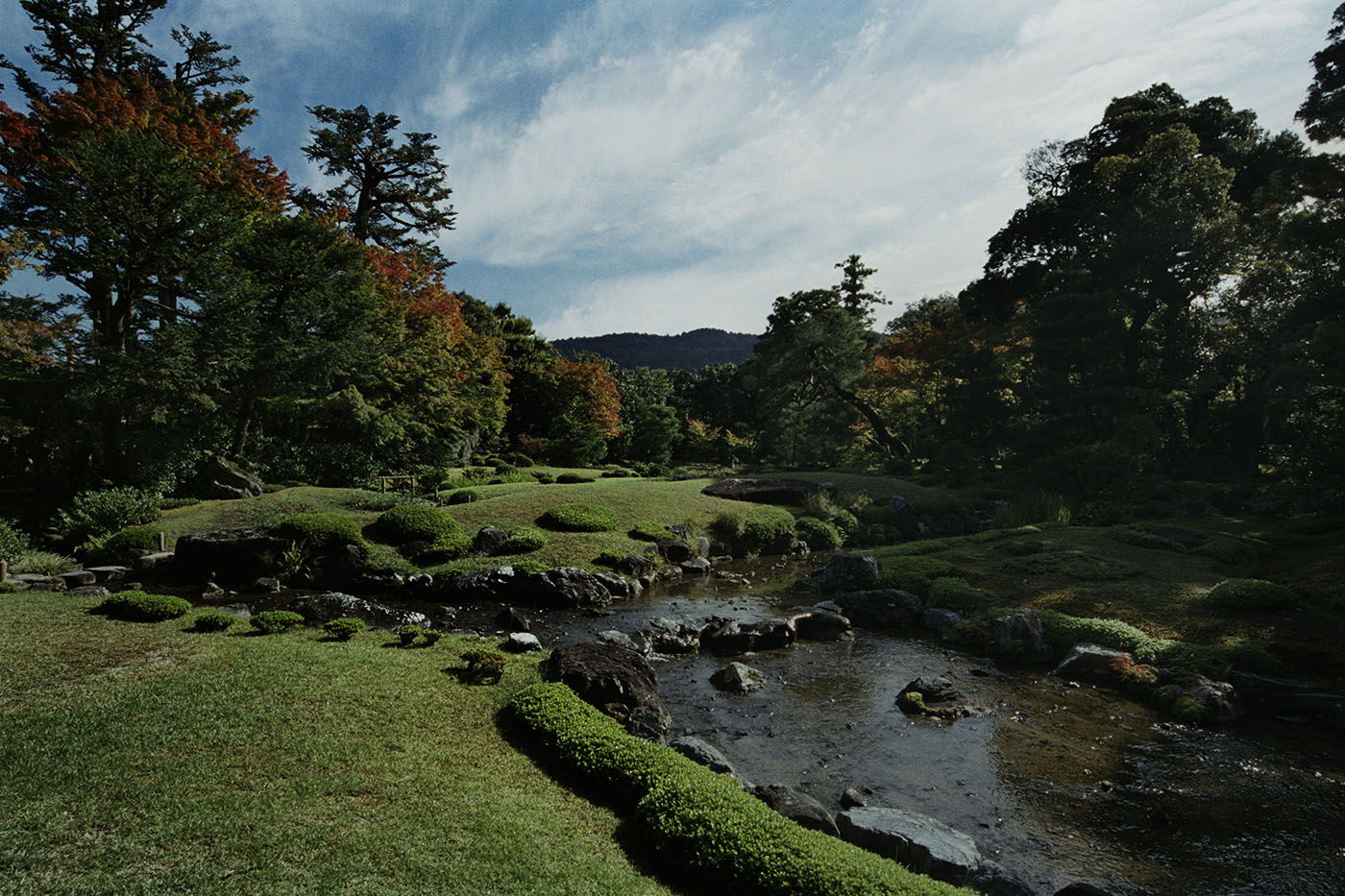
So, you went to Murin-an, not for the shakkei but the stream?
Yamaguchi:
The trees have been pruned subtly to create perspective, and what you see of Higashiyama beyond that is what serves as shakkei. The stream runs from the far end of the garden, from Higashiyama to the fore. Although the area looks flat, it’s been elevated artificially on the far side. This creates depth and allows the water to flow. The perspective created by the tree line and the depth created by the stream, both indicate that shakkei is still in fact center stage.
Kumon:
The land around there seems flat but Murin-an has depth; it’s three-dimensional. Higashiyama is unexpectedly far away, but oddly enough the eye is still drawn to it. Even in areas where shakkei isn’t the focus, the buildings, forest, stream, and path all come together and create a comfortable atmosphere. It’s a small stream, but it makes you feel you’re part of a vast world. I got the sense that the world was not exactly miniature but concentrated.
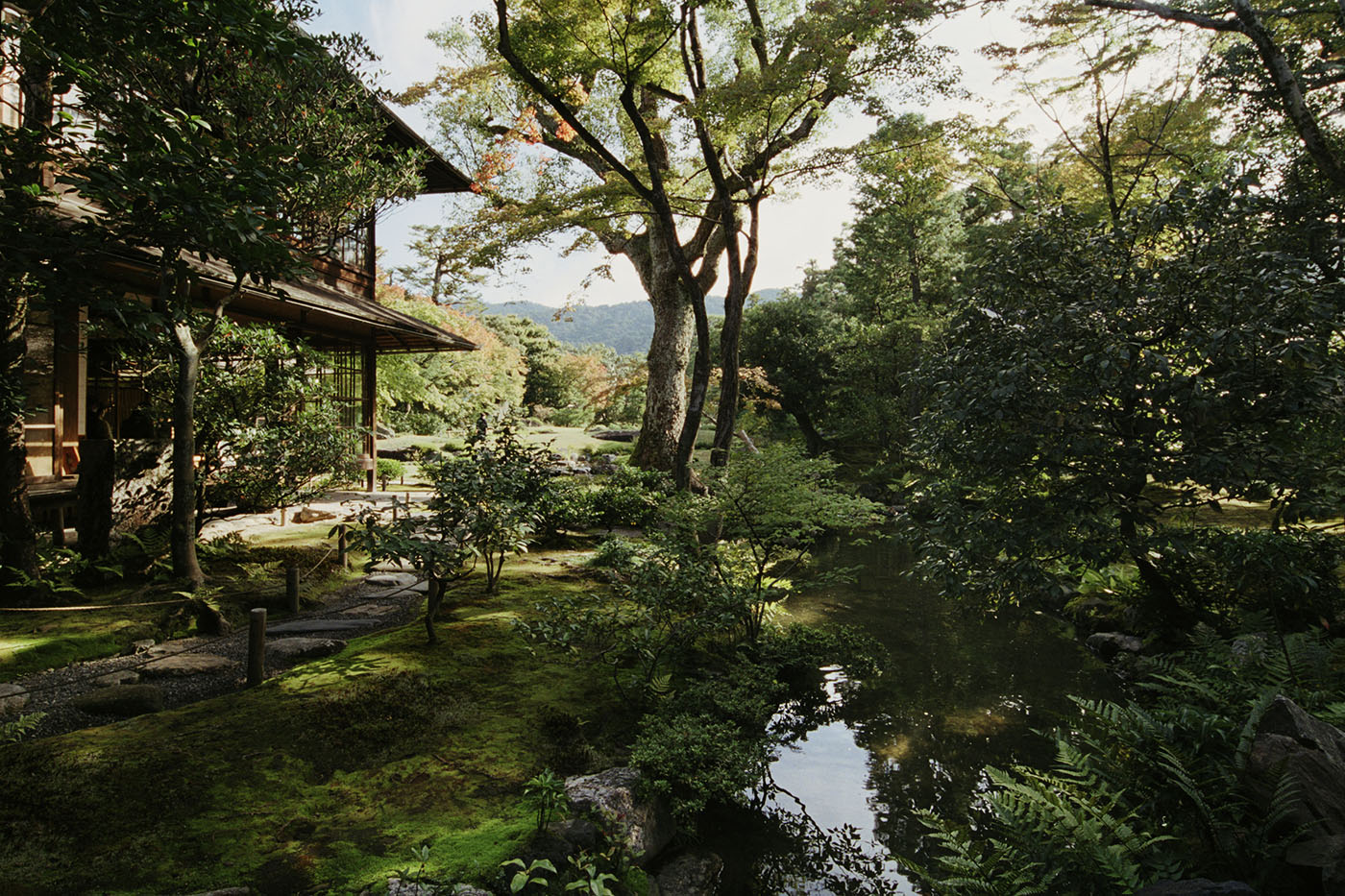
Yamaguchi:
I think it feels so comfortable because the space is so deftly controlled that you don’t quite see the intention behind the design. On one hand, the shakkei of Higashiyama is the main feature, and the microscopic, highly concentrated reproduction of nature is just fascinating to observe.
Jihei Ogawa’s gardens were often designed for politicians and zaisbatsu, and I feel like his works were mostly very relaxing spaces with less abstraction you see in the world of Zen Buddhism. Where you admire shakkei is also where you might compose a poem, and elsewhere in this garden, as you move through it and pause here and there, there are myriad combinations of materials that put you at ease.
